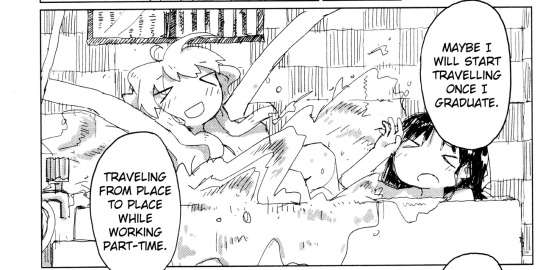Note
Sometimes I see the claim that "small femme bottom/large masc top" trope is a "fujoshi" thing and not something that's a thing among queer men but if anything, BL tends to be less extreme than a lot of stuff I've seen from queer men when it comes to that trope? Not to say there aren't extreme cases in BL*, just that a lot of non-BL type gay content that does employ it, in my experience often has more size difference, age gap, etc. *(the main example i can think of was made by 2 men though)
…is that main example, by any chance, Okane ga Nai? Because yeah, that is a perfect example of how a lot of bad BL tropes weren’t actually created or popularized by women.

Cover art of Okane ga Nai vol. 1, written by Hitoyo Shinozaki (A MAN) and illustrated by Touru Kousaka (ANOTHER MAN).
I think everyone should know that Okane ga Nai, the most emblematic, stereotypical, tropey BL manga/anime ever, was created by two dudes. I’m gonna keep repeating this until everyone knows it. (And because it’s just plain hilarious.)
I understand why people dislike the “big masc top/small femme bottom” dichotomy. Any gay couple who has been asked “who is the man/woman in the relationship” knows how much queer people are viewed through a heteronormative lens.
But it grates my nerves when people blame fujoshi or slash shippers for this! These tropes in same-sex couples have existed for literally thousands of years. From pederasty and erastes/eromenos in Ancient Greece going back at least a few centuries B.C.E., to similar dynamics in Ancient Rome, to shudou between samurai and nenja/chigo among Buddhist monks in Japan starting at least at the Heian period (794-1185), the ideal of a relationship between two men has long been that of an older, more masculine man and a more feminine youth.
Goddamn Plato was getting into top/bottom (ahem, erastes/eromenos) discourse over Achilles and Patroclus, with artists and other philosophers, in the 5th and 4th century B.C.E.! These tropes are ancient!

Scroll painting by Miyagawa Isshou (ca. 1750), showing a kiss between a samurai (right) and a young man in kabuki attire (left). Young kabuki actors who played female roles (onnagata) or the roles of young men (wakashuu-gata) often doubled as sex workers, and were popular with both male and female clients.
I talked a bit about the origins of seme/uke tropes in BL here, and of how they don’t actually fit modern-day Japanese gay stereotypes here.
Although attitudes about sexual orientation, sex acts, and gender identity and expression have changed a lot over the past century, some of these stereotypes are still perpetuated within gay communities. This is clearly evident if you hang around IRL gay circles, browse gay dating sites/apps and forums, or look at popular, mainstream gay porn. A lot of LGBTQ+ people don’t actively question or seek to deconstruct the idea of a masculine top/Dom always paired with a feminine bottom/sub.
Sometimes, outsiders can make dangerous assumptions based on stereotypes, such as presuming that gay men are trans women, lesbians are trans men, and vice-versa. But within the community, it usually leads to much less dangerous but still annoying assumptions. For example: there are many feminine gay men who prefer topping or domming, but because they are feminine, other men don’t believe them or don’t want to be topped/dommed by them.
However, stereotypes about looks and expression are a bit different from other LGBTQ+ stereotypes. It is true that thinking that all gay people MUST look/act like this is bad, and not having a diversity of looks, body types and couple dynamics in gay media is bad. But we cannot deny that there ARE gay people and gay couples who do fit these stereotypes, and it’s not a bad thing.
Criticism of gay stereotypes in mainstream media is often reduced to people criticizing every instance of a gay person or couple in media who fits these stereotypes, even when it’s fiction created by queer people, or non-fiction! For example: there were people on social media calling the guys from Queer Eye “bad representation” because they’re campy, even though they’re real people, not fictional characters! And there’s nothing wrong with campy gay characters either!
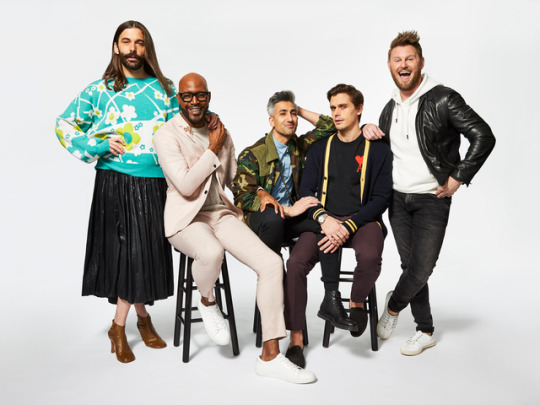
Cast of Netflix’s Queer Eye reboot, dubbed the “Fab Five”.
This tends to happen with media criticism in general. A criticism of a general trend (e.g.: most submissive gay characters are small and there is a lack of representation for other body types) is oversimplified and turned into an attack of any individual work that fits that stereotype (”if you draw a small gay sub, you’re homophobic!”). This makes people who fit that stereotype (small gay subs) feel that they can’t have characters that represent them without facing backlash for promoting a stereotype, and ignores the fact that these people may be marginalized even within their community (feminine gay men are often demeaned by other gay men).
It’s helpful to have guidelines for creating better LGBTQ+ stories and characters, and to avoid tropes that reinforce dangerous IRL prejudices. But having a strict set of rules for that doesn’t work, because there isn’t a single “correct” way of being LGBTQ+.
Clearly, this isn’t a BL/fujoshi-only issue. Of course, many fujoshi do have stereotypical notions of gay couples, especially if they don’t have contact with real-life gay communities, but blaming BL and fujoshi for these stereotypes existing in the first place is nonsense. Like a lot of BL discourse, this is using a recent genre of manga as a scapegoat for widespread societal problems.
Seme/uke tropes still exist in BL, but they’re not nearly as common as they were in the late 90′s-early 2000′s, the time period when most Western perceptions of BL and fujoshi were formed. Nowadays, it’s far more common for BL to feature characters of roughly similar size and appearance, and subversion of typical top/bottom tropes is very popular (e.g.: “riba”/vers pairings, younger seme/older uke, subordinates topping their superior/boss, “macho” subs, etc.).
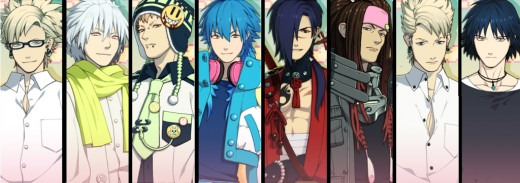
Characters from Dramatical Murder (DMMD), a 2012 BL visual novel and one of the most popular BL games of all time. Most of the characters have very similar height and body type.
In my opinion, a much more glaring issue in contemporary BL is the limited diversity in body types and appearance. The overwhelming majority of BL characters are “bishounen” types (young, androgynous, and beautiful), which is one of the main appeals of the genre and one of the main criteria used to categorize a work as BL/fumuke rather than geikomi/geimuke. This means that body types other than hairless, fair-skinned, and slim or muscular are often left out, though this has also been changing in recent years.
Especially in the last decade, there has been a growing number of BL titles featuring characters with more diverse appearances. Muscular, stocky, and sometimes hairy characters can be found in publications such as 肉体派BL (Nikutaiha BL) and 筋肉BL (Kinniku BL). Chubby and fat characters are rarer, but there are some examples. Darker-skinned characters are more common these days, though almost all stories that have explicitly Black or Indigenous characters are set outside Japan (and the representation is often stereotypical).

Panels from ch. 2 of Hoppe ni Himawari by Ori Mita, which features a chubby protagonist. (In case you want to read the manga: warning for casual fatphobia)
There is still a long way to go in terms of diversity in BL, but we can work to promote the titles that do it well and support the creators, instead of tossing aside BL as a whole as “stereotypical garbage”.
And of course, we should criticize fujoshi when they say prejudiced things such as “all gay men are like X and Y”, but not ONLY fujoshi. Criticize everyone who spreads prejudice, including other LGBTQ+ people.
708 notes
·
View notes
Text
@noitemsfoxonlyfinaldestination
I’m not being disingenuous Me explaining the meaning of the word was BL isn't meant to be idyllic anymore than geicomi is. Geicomi is heavily eroticized; should Gengoroh Tagame be taken to task for depicting an unrealistic, sexually promiscuous gay culture to impressionable gay men? Is he irresponsibly teaching young gay men that anonymous gang sex is what should be expected? Does the fact that he’s an influential gay man make him all the more sinister for drawing what enjoys?
No, of course not. Because education shouldn’t be the responsibility of manga content.

(Pictured above: Cretian Cow, one of Tagame’s many sadomasochistic works depicting a guy getting raped by a Minotaur. But who will think of the young, impressionable gay men who think this is okay?!)
If you want to talk social responsibility you’re going to have to direct your ire toward institutions that keep impressionable young folks in the first place. GT’s manga doesn’t come with warnings, like most geicomi and BL, and if you want to argue for something more practical than “stop making this because some people are taking it as fact,” advocate for more content warnings so they can safeguard themselves. Like every other thing with "problematic" content. BL is not meant to be educational. If you believe certain fictional media should be destroyed or censored because someone might take it to heart, you’re setting a dangerous precedent.
29 notes
·
View notes
Note
Excuse me, I'm kinda new to this series, so I was confused as to why the novels aren't numbered? Do I have to read them in a specific order? Or do they tell completely different stories?
To anyone who’s new to this, I suggest you read the getting started guide here.
The full Masterlist in the Google Docs is here (Tumblr here)
In essence, MGRP is divided into several Arcs, and several side story volumes called “Episodes” (Episodes and Episodes Phi).
The Arcs are appropriately named.
The Anime covers Arc 1 (known as Unmarked after future books).
Arc 2 is Restart, Arc 3 is Limited, Arc 4 is JOKERS, Arc 5 is ACES, Arc 6 is QUEENS.
They’re all set within the same universe. There is an ongoing continuous story, but each arc can also be standalone (The best comparison I can make is DanganRonpa or JoJo’s Bizarre Adventure). The only difference between the Arcs is that they star different protagonists, a key feature in MGRP stories.
Do take a look at those masterlists and beginner’s guides! I try to make them easy enough to follow, and it’s not hard to get started on reading MGRP!
I recommend this series wholeheartedly. Hope you enjoy it! :D
104 notes
·
View notes
Text
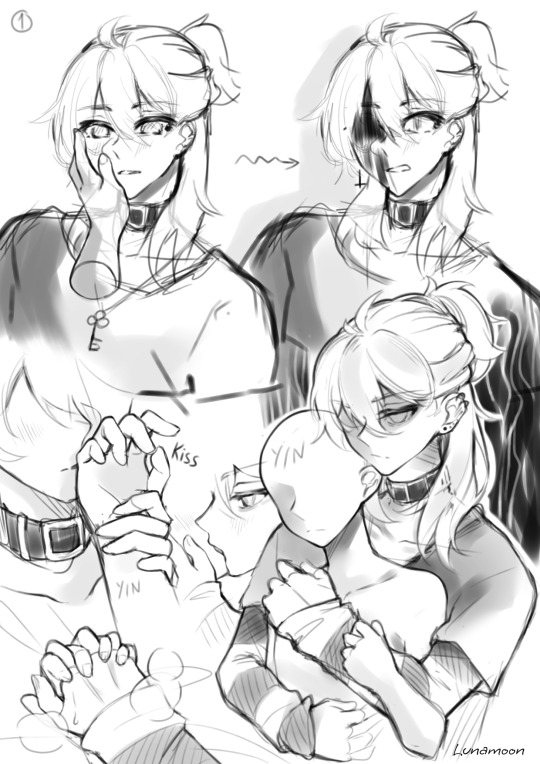
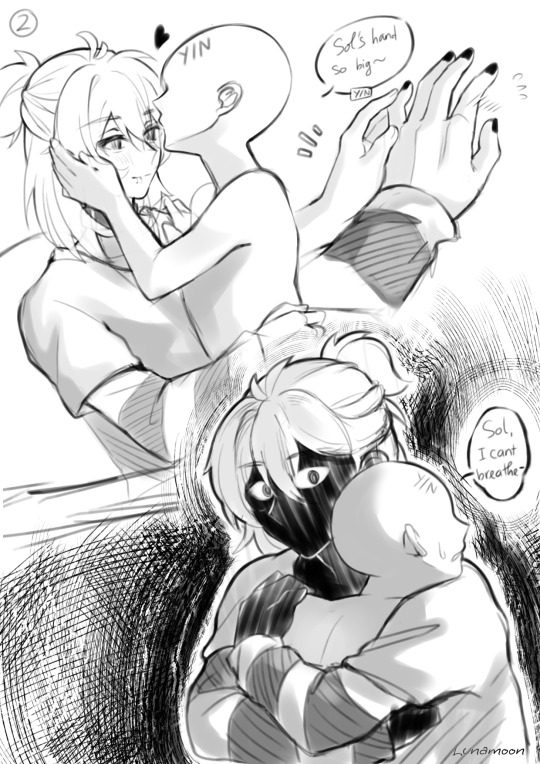
I imagined a lot about Sol and MC's scene when the two of them were together.
While drawing I couldn't help but think about Sol getting his love but still keeping that yandere look, glaring at the world but gentle with only MC >//////<💦💦
Next will be a little smut. Minors dni plsss🙏🙏
.
.
.
.
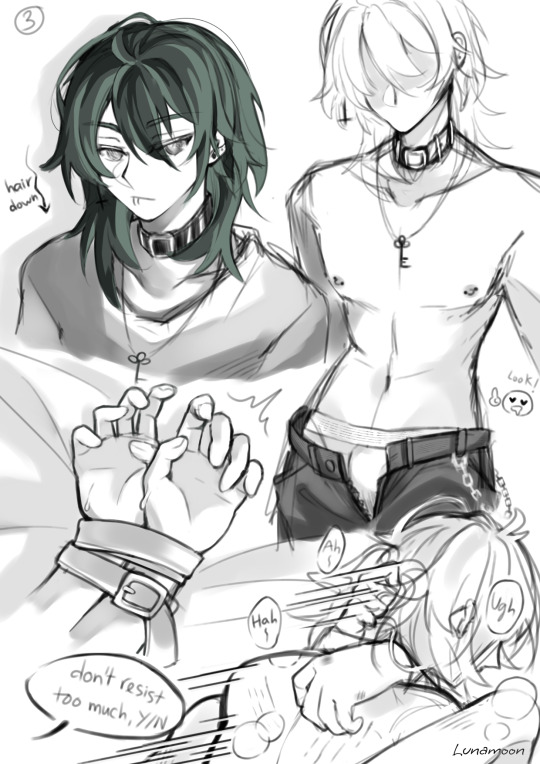
Andddd~ Their bed scenes are indispensable. i'm not saying i draw and nosebleed thinking about sol's abs😔😔🐽🐾ᓚ₍ ^. .^₎
2K notes
·
View notes
Note
I can tolerate anyone no matter what they ship or don't ship but I absolutely cannot tolerate anyone who ever uses the word "cummies" in fanfiction.
--
I can't recall ever seeing it in fanfic.
In atrocious original porn, however...
89 notes
·
View notes
Note
Excuse me, I'm kinda new to this series, so I was confused as to why the novels aren't numbered? Do I have to read them in a specific order? Or do they tell completely different stories?
To anyone who’s new to this, I suggest you read the getting started guide here.
The full Masterlist in the Google Docs is here (Tumblr here)
In essence, MGRP is divided into several Arcs, and several side story volumes called “Episodes” (Episodes and Episodes Phi).
The Arcs are appropriately named.
The Anime covers Arc 1 (known as Unmarked after future books).
Arc 2 is Restart, Arc 3 is Limited, Arc 4 is JOKERS, Arc 5 is ACES, Arc 6 is QUEENS.
They’re all set within the same universe. There is an ongoing continuous story, but each arc can also be standalone (The best comparison I can make is DanganRonpa or JoJo’s Bizarre Adventure). The only difference between the Arcs is that they star different protagonists, a key feature in MGRP stories.
Do take a look at those masterlists and beginner’s guides! I try to make them easy enough to follow, and it’s not hard to get started on reading MGRP!
I recommend this series wholeheartedly. Hope you enjoy it! :D
104 notes
·
View notes
Note
I just wish the gay men who complain all day about women/afab making and reading/watching BL bc of how problematique they think the stories are would instead go read geicomi. When they encounter the same kinds of (and sometimes more graphic/transgressive) stories, they'd have the joy of telling men who don't give af (and who are socialized to prioritize themselves, unlike women) how their stories are badwrong and leading to the downfall of society. I'd actually pay money to see that.
--
As if those cowards would ever!
55 notes
·
View notes
Note
If geicomi is more popular & accessible in the west, do you think they will be criticized like BL? Geikomi is FUUULLL of non-con idk why women who like BL are getting told all they make is problematic content when gay men make some intense porn for themselves. Or will ppl glossed it out as "Oh, geicomi is pure bceause it's written by gay men, unlike by those *shitty* straight women."
This is just a hypothetical scenario, since I think that the hardcore aspect of most geikomi IS one of the things preventing it from becoming more mainstream in the west… but if it did, I don’t think it would be nearly as criticized as BL.
There are already plenty of hardcore and problematic types of pornography freely available and easily accessible in the west right now, including problematic gay porn, but since anti-BL people don’t see it and it’s made by men in positions of power, rather than small, independent female/trans/nonbinary creators… they never criticize it.
My guess is that anti-BL people would just keep assuming that geikomi is pure because it’s written by MLM, and never actually read it, no matter how accessible it becomes ¯\_(ツ)_/¯
19 notes
·
View notes
Text
Anyway, the word fujoshi has no business being thrown around in discourse that isn’t about BL anime and manga. It is not a sexuality or a gender identity. It does not mean ‘transtrenders’ or mlm trans men or afab people who use mogai identities. It means a female (or female-aligned) fan of BL anime and manga, which is a specific subgenre of romance that focuses on m/m relationships, typically highlighting the emotions between characters and often using a heavily shoujo-inspired art style.
2K notes
·
View notes
Text
he is a bit delusional (my first attempt in capcut, its easier than I thought 😭)
the drawings:
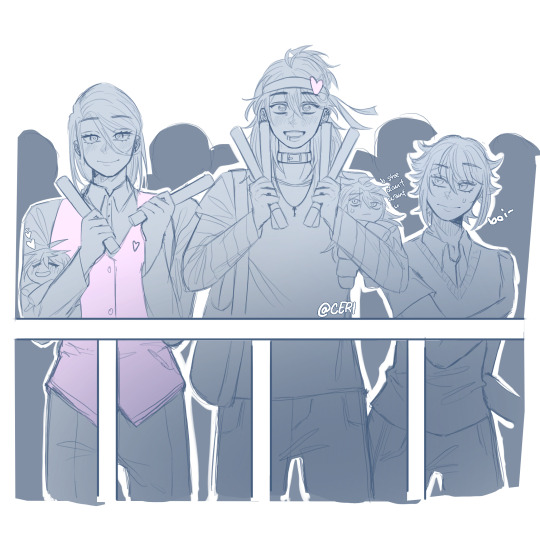
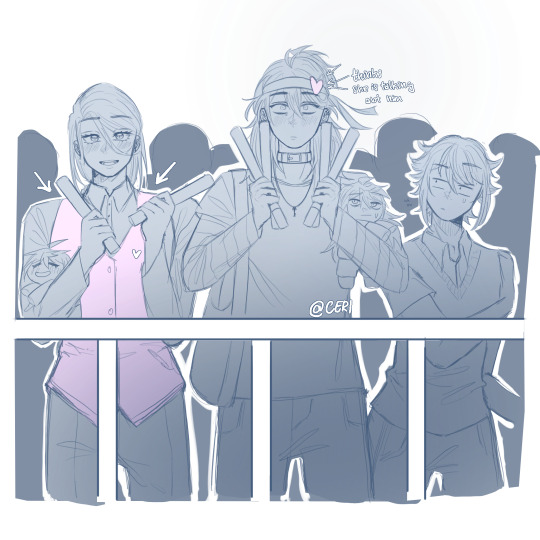
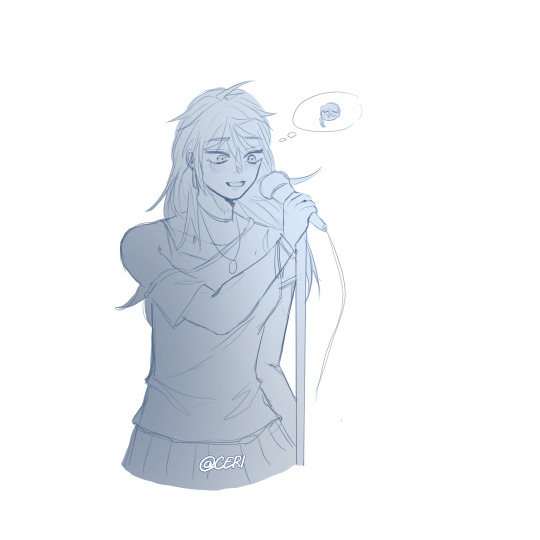
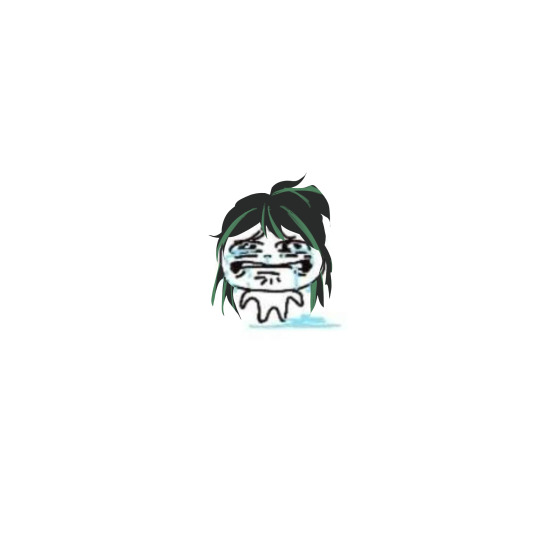
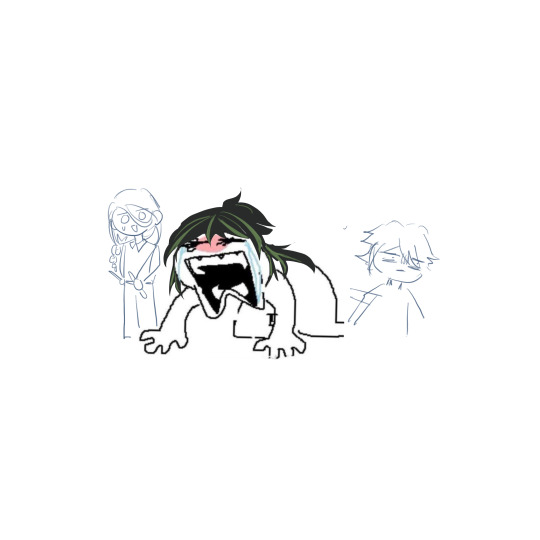
1K notes
·
View notes
Text
Last girls panic
Blooming tour
Idfk


#blooming panic#bloomic#girls last tour#GLT#Shōjo Shūmatsu Ryokō#blooming panic xyx#bloomic xyx#xyx#fanart
8 notes
·
View notes
Text

I made this picture after joking with friends about Murino in St. Petersburg, Russia. For context, it's a neighborhood that looks like a place after the apocalypse.
2K notes
·
View notes
Text


girls last tour girls exploring my neighborhood
245 notes
·
View notes
Text
Chito and Yuuri from Girls last tour kissing‼️‼️🌟

285 notes
·
View notes
